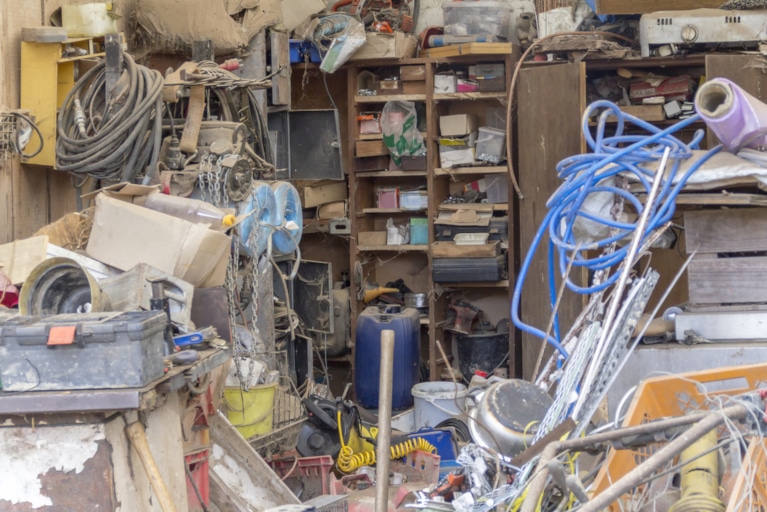Moving can be a challenge for anyone. For a hoarder, it can be even more difficult to manage. Their home is likely packed to the gills with clutter – old newspapers, piles of books, boxes full of clothing and other detritus – making the process of moving to a new home overwhelming.
While most people consider a move the perfect time to ditch unused items, someone who hoards has a strong attachment to their belongings and won’t want to toss or donate them. Here are some ways to help ease a hoarder’s transition to a new home.
Understand the Situation
Hoarding disorder is defined as having difficulty parting with possessions because of a perceived need to save them. A person with hoarding disorder feels distressed at the thought of discarding their items – often leading them to fill every available space in their home with clutter. Hoarding is linked to other mental health issues, including anxiety, depression and obsessive-compulsive disorder (OCD).
While it’s not clear what causes hoarding disorder, risk factors include:
- Family history – People who are related to someone with hoarding disorder are more likely to have it themselves.
- Personality – Many people with hoarding disorder are indecisive and obsessive.
- Stressful life events – Some people develop the disorder to try to cope with the death of a loved one, divorce, eviction or losing possessions in a fire or natural disaster.
Be Accommodating
Many people with hoarding disorder are anxious about getting rid of their belongings, so trying to convince them to throw everything out will just compound the stress of the move.
Instead, talk with them to see how you can help. Some hoarders are aware of the issue and are willing to let others remove the clutter. In other cases, even trying to discuss it can cause conflict. Be considerate in any attempts to toss or donate items.
Create a Moving Strategy
A successful move requires a well-thought-out plan. This is especially important when helping a hoarder move, because they have so many more belongings than the average person.
In the months and weeks before the move, consider hiring a professional organizer. These trained specialists can work with hoarders to take the burden of organization off their shoulders. They will come up with a plan of action – deciding what to get rid of, what to keep and how best to store these items for the move.
A home filled with clutter can be difficult to clean, so don’t be surprised if a hoarder’s house is dirty and possibly a health hazard. If you plan on tackling the cleanup yourself, here are some considerations:
Come Prepared
Cleaning up can expose you to biohazards, like E. coli, hantavirus and staph. Protect yourself with gloves and a face mask.
Separate Items Into Categories
Determine which things the hoarder wants to keep, which can be donated and what needs to be thrown out. In general, belongings that haven’t been used in more than a year should not be kept, and if something is broken, it should be thrown out.
Ask for Help
Depending on the home’s condition, you may want to work with a residential cleaning service to leave it in the best condition possible.
Hire Movers
Movers are a key part of any relocation, especially for a hoarder. Having a team of professionals coordinating the move, packing, unpacking and loading boxes can reduce stress and give you one less thing to worry about.
Get Help Moving With Continental Van Lines
Whether you’re helping a hoarder find a new home or you and your family are relocating, you can rely on Continental Van Lines to handle your move. We have more than 60 years of experience moving people coast-to-coast and internationally, and we offer a full range of services to ensure your move goes smoothly.
Call (206) 937-2261 today or visit us online for your FREE quote.


